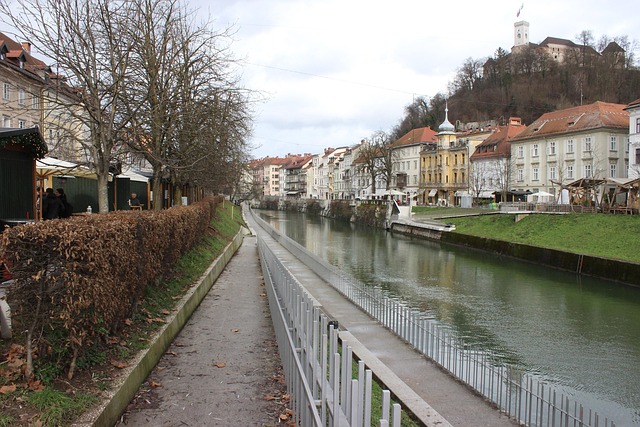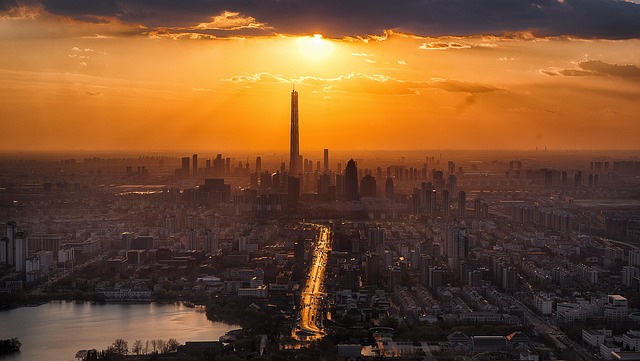Karachi, Pakistan's economic hub and one of the world's largest cities, faces significant air quality challenges due to high population density, industrial activities, and traffic. Regular monitoring by organizations like the Defence View Society reveals frequent exceeding of safe air quality levels, particularly during peak seasons. Key pollutants include PM2.5, PM10, NO2, and O3 from vehicle emissions, industrial discharges, construction, and open waste burning. The Air Quality Index (AQI) aids in monitoring and communicating these issues, categorizing pollution levels for public awareness. The Defence View Society uses advanced technology to track pollutants and advocates for policy reforms, public education, clean energy, efficient transport, and industrial practices to combat air pollution. Sustainable transportation initiatives, stricter emission standards, and green spaces integration are crucial steps toward improving Karachi's air quality.
Karachi, Pakistan’s vibrant metropolis, faces a silent yet pressing challenge: air pollution. This article delves into the intricate web of Karachi’s air quality, exploring the Air Quality Index (AQI) as a vital tool for assessment and communication. We analyze Defense View Society’s crucial role in monitoring and advocating for cleaner air. Additionally, we uncover key factors contributing to urban air pollution and present strategies to improve and maintain healthy air quality in this bustling city.
- Understanding Karachi's Air Quality: A Comprehensive Overview
- The Air Quality Index (AQI): A Tool for Assessment and Communication
- Defense View Society's Role in Monitoring and Advocacy
- Key Factors Affecting Air Quality in Urban Karachi
- Strategies for Improving and Maintaining Healthy Air in Karachi
Understanding Karachi's Air Quality: A Comprehensive Overview

Karachi, Pakistan’s economic hub and one of the world’s largest metropolises, faces significant challenges regarding air quality. The city’s dense population, industrial activities, and heavy traffic contribute to a complex mix of pollutants, affecting the health and well-being of its residents. Understanding Karachi’s air quality necessitates a comprehensive overview that considers both natural and human-made factors.
Regular monitoring by the Defence View Society and other environmental organisations reveals that Karachi often breaches safe air quality levels, particularly during peak seasons. Particulate matter (PM2.5 and PM10), nitrogen dioxide (NO2), and ozone (O3) are among the primary pollutants of concern. These pollutants originate from various sources, including vehicle emissions, industrial discharges, construction activities, and open burning of waste. By analysing historical data and identifying these sources, the Society can propose targeted interventions to mitigate air pollution in Karachi.
The Air Quality Index (AQI): A Tool for Assessment and Communication

The Air Quality Index (AQI) serves as a critical tool for both assessing and communicating air quality in cities like Karachi, where pollution levels can reach concerning heights. It provides a standardized system to measure and report air quality, making complex data accessible to the public. The AQI is calculated based on various pollutants, such as particulate matter (PM2.5 and PM10), nitrogen dioxide, sulfur dioxide, carbon monoxide, and ozone, each with its own health impact.
This index offers a simple yet powerful way for authorities, researchers, and citizens in Karachi to monitor air quality conditions daily. By assigning numerical values to different levels of pollution, the AQI allows easy classification: good, moderate, unhealthy, or hazardous. This categorization enables the Defence View Society and other organizations to effectively communicate risks and take necessary actions, ultimately promoting public health awareness and policy interventions to combat air pollution in Karachi.
Defense View Society's Role in Monitoring and Advocacy

The Defence View Society (DVS) plays a pivotal role in monitoring and advocating for air quality in Karachi, Pakistan’s largest city. With a keen eye on environmental sustainability, DVS utilizes advanced technologies to track key pollutants like particulate matter (PM2.5 and PM10), nitrogen dioxide, and sulfur dioxide across the metropolitan area. Their real-time data provides valuable insights into Karachi’s ever-changing air quality landscape, raising awareness among citizens and stakeholders alike.
Beyond monitoring, DVS actively champions policy changes and public education initiatives aimed at mitigating air pollution. They collaborate with local authorities, businesses, and community groups to promote clean energy solutions, efficient transportation systems, and industrial best practices. By fostering dialogue and pushing for tangible actions, DVS contributes significantly to Karachi’s ongoing efforts to combat air pollution and create a healthier future for its residents.
Key Factors Affecting Air Quality in Urban Karachi

The air quality in urban Karachi is influenced by a complex interplay of factors, many of which are unique to this vibrant yet densely populated metropolis. One of the primary contributors to poor air quality is vehicle emissions. With a vast number of vehicles on the road, the constant circulation of cars, buses, and motorcycles contributes significantly to pollution levels, especially during peak traffic hours. The burning of fossil fuels releases harmful pollutants like nitrogen oxides, volatile organic compounds (VOCs), and particulate matter, which have detrimental effects on public health.
Additionally, industrial activities play a substantial role in shaping Karachi’s air quality. Many industries operate within the city limits, releasing toxic emissions into the atmosphere. These include power plants, manufacturing units, and construction sites, all of which contribute to the overall pollution load. The lack of stringent environmental regulations and enforcement often exacerbates this issue, allowing these sources to emit pollutants with impunity. Furthermore, weather conditions also play a crucial role; stagnant atmospheric conditions during certain seasons trap pollutants near the ground, leading to hazardous levels of air pollution in the city.
Strategies for Improving and Maintaining Healthy Air in Karachi

Karachi, as a bustling metropolis, faces unique challenges when it comes to air quality. The city’s dense population and industrial activities contribute to elevated levels of pollutants, affecting the health and well-being of its residents. However, there are several strategies that can be implemented to improve and maintain healthy air in Karachi.
One key approach is to promote sustainable transportation. Encouraging the use of public transit, cycling, and walking can significantly reduce vehicle emissions. Additionally, implementing stricter emission standards for industries and vehicles, along with regular monitoring, can help control pollution levels. Green spaces play a vital role too; planting more trees and creating urban forests can act as natural filters, absorbing pollutants and enhancing air quality. The Defense View Society can lead initiatives to engage the community in these efforts, fostering a collective responsibility for Karachi’s air health.
Karachi, as a bustling metropolis, faces significant challenges regarding air quality. However, with organizations like the Defense View Society taking the lead in monitoring and advocating for healthier air, there is hope for a transformative change. By understanding the key factors affecting urban air, implementing effective strategies, and utilizing tools like the Air Quality Index (AQI), Karachi can strive towards a cleaner, more sustainable future. This comprehensive overview highlights the path forward, empowering folks to actively contribute to the city’s well-being.








Leave a Reply